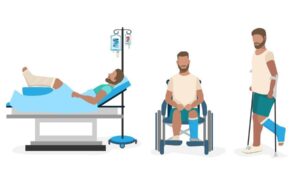Introduction
Feline oral resorptive lesions (FORLs) are a common dental pathology in cats. Unfortunately, feline Oral Resorptive Lesions (FORLs) are often overlooked afflictions that can occur in felines. Generally, they are discernible in middle-aged to elderly cats, with a chance of up to a quarter. These lesions can be a source of discomfort, hamper the capacity to consume food, and in certain circumstances, can result in further difficulties, including contagion and tooth deprivation. Therefore, it is essential for veterinary practitioners to be knowledgeable of this disorder and pet proprietors to know the warning signs and possible risks linked with FORLs. Early diagnosis and treatment of FORLs can help prevent further dental damage and improve the quality of life for cats affected by this condition.
What are FORLs?
Feline oral resorptive lesions (FORLs) are dental pathology seen in cats. They are characterized by the resorption or deterioration of the tooth’s enamel and dentin layers, leading to cavities and exposure of the underlying pulp tissue. They can range from small, shallow lesions to large cavities extending down to the tooth’s root.
The exact cause of FORLs is unknown, but several theories have been suggested. Some believe that FORLs are caused by trauma to the teeth, while others suggest that it is due to an underlying metabolic abnormality. There is also evidence to suggest that genetics may play a role in the development of FORLs.
Signs and Symptoms
The most common signs of FORLs in cats are drooling, bad breath, pawing at the mouth, and difficulty eating. In cases of advanced FORLs, cats may also show signs of facial swelling and pain. Cats may also display discomfort when their teeth are touched, excessive drooling, and difficulty eating. In severe cases, cats may even lose teeth due to the extensive damage caused by FORLs.
Diagnosis
FORLs are usually diagnosed through a physical examination and dental radiographs. During the physical examination, the veterinarian will look for any cavities, exposed pulp tissue, and discoloration of the teeth. Dental radiographs can identify the extent of the FORLs and any underlying abnormalities. In addition, blood work may be recommended to look for any metabolic disorders that may be contributing to the FORLs.
Prevention
In addition to good oral hygiene and regular dental checkups, there are other steps that can be taken to help prevent the development of FORLs in cats. For example, providing cats with toys that promote chewing can help keep their teeth clean and healthy. Additionally, feeding cats a diet high in calcium can help strengthen their teeth and reduce the risk of developing FORLs. Pet owners should also ensure that cats have access to plenty of fresh water, which will help keep their mouths moist and reduce the risk of FORLs. Finally, regular dental exams should be performed to check for signs of FORLs and other dental issues.
Conclusion
Feline oral resorptive lesions (FORLs) are a common dental pathology seen in cats. Feline Oral Resorptive Lesions (FORLs) are a common yet often overlooked oral health condition in cats. These lesions can be detrimental to feline wellbeing, as they can provoke aches, impede ingestion and, in certain cases, generate further difficulties such as contagion and dentition erosion. Thus, pet owners and veterinary professionals must recognize the indicators and elements of danger related to FORLs to diagnose and treat the issue accurately. Regular dental assessments and proper dentition hygiene are recommended to prevent the emergence of FORLs in cats, as is prompt diagnosis and treatment to quiet the severity of the lesions and enhance the cats’ comfort.”





